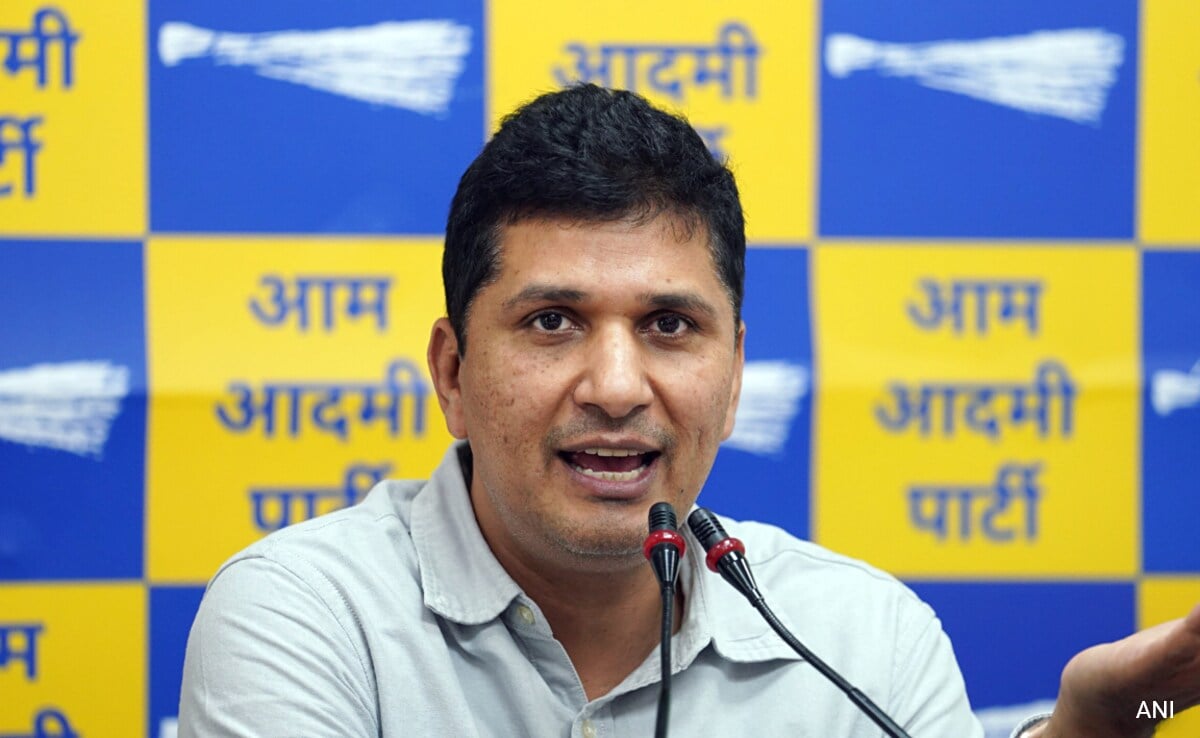In his report on the basement tragedy at Delhi’s Rajinder Nagar that left three IAS aspirants dead, Delhi government’s Chief Secretary Naresh Kumar has blamed the coaching centre for encroachment that blocked drains and accused minister Saurabh Bharadwaj of sitting on a key legislation to tackle waterlogging in the national capital.
This is the Chief Secretary’s response after Mr Bharadwaj, who holds multiple portfolios including flood control, sought an explanation about the bureaucrat’s claims of pending decisions.
The Chief Secretary has said that a meeting was convened after heavy rain last year led to waterlogging in the city to come up with a comprehensive strategy to prevent flooding, according to sources.
The meeting found that there was a need to consolidate drainage management in Delhi for 18 years and emphasised on the requirement for a Storm Water and Drainage Act with penal provisions for encroachment and dumping of waste into these drains. The meeting also called for a Master Drainage Plan for Delhi.
These findings, he has said, were submitted to the minister in August 2023 and remained with him for consideration till February this year. It was only after that gap of five months that the minister asked for a presentation, the senior official has said.
He has added that the Irrigation and Flood Control Department has not taken any decision yet on bringing a Storm Water and Drainage Act. On the Master Drainage Plan, the Chief Secretary has said that an IIT Delhi report on this was not accepted by Aam Aadmi Party government. It was then decided that three separate drainage plans would be prepared, but no substantive work has taken place so far.
The report says that the draft of the Storm Water Drainage Act is still pending with the minister and pointed out that such a legislation would impact the rainwater management in the national capital.
The storm water drainage system in Delhi, the Chief Secretary has said, cannot be controlled without a proper legislative framework and this situation leads to flooding in several areas whenever there is heavy rain.
What Led To Basement Tragedy
On the Rajinder Nagar incident, the Chief Secretary has pointed to the findings of the probe conducted by the Municipal Corporation of Delhi. The construction of ramps in violation of norms has blocked the entry of drains through which rainwater can be drained out, the report says. Manholes and drains in the area have been covered by granite or marble or kota stones, and this has made cleaning of drains impossible.
So every time there is heavy rain, water accumulates on the road along which the coaching centres are located. This water, which should have been disposed off through drains, moves towards the parking area and the basements.
At Rau’s IAS Study Circle, where Saturday’s tragedy took place, the drainage system has been blocked completely and no safeguards to meet any eventuality are in the place, the report says.
The Blame Game Continues
This Chief Secretary’s report is the latest episode in the blame game in the aftermath of the basement tragedy. The deaths of Tanya Soni, Shreya Yadav and Nevin Dalwin have sparked massive protests by students who blame civic negligence for the tragedy. The Opposition BJP has targeted the ruling AAP, which also controls the MCD. AAP has hit back, alleging a big conspiracy and corruption in desilting work in the national capital. Minister Saurabh Bharadwaj said that the work of removing silt from drains and sewers was not done properly due to the negligence of officers of PWD, MCD and Irrigation and Flood Control Department. He said that Delhi government can neither transfer these officers nor take any action against them and only Lieutenant Governor VK Saxena can do so.
AAP’s Rajinder Nagar MLA Durgesh Pathak has questioned why no work on Delhi’s drainage system was done in the past 15-20 years. “The BJP should have shame. We demand action against all officers, including the senior officers who are found responsible,” he told ANI.
![]()
